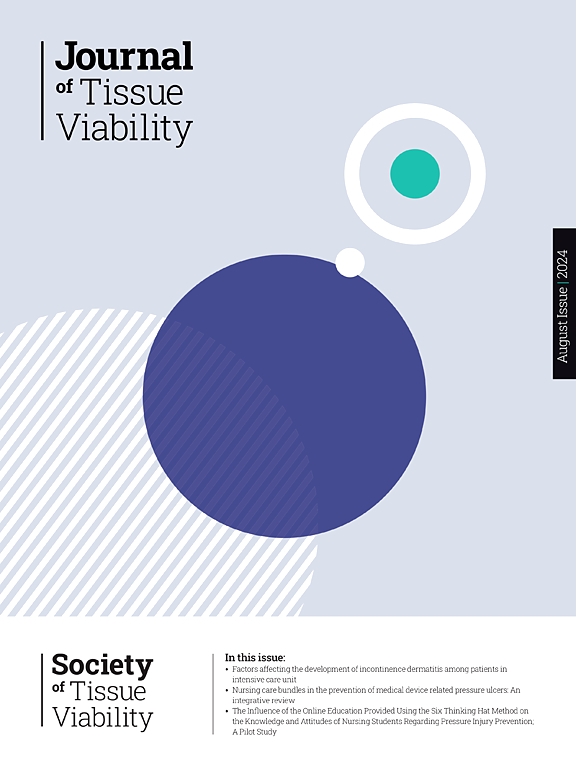组织工程应用中基于pet的二元电纺纳米纤维的结构和组织病理学挑战评估
IF 2.4
3区 医学
Q2 DERMATOLOGY
引用次数: 0
摘要
组织工程和再生医学旨在解决组织病变和器官变性,通过恢复受损组织和功能来提高临床效果。近年来,材料科学和医学的进步促进了再生工程的发展,通过静电纺丝方法模拟细胞外基质(ECM),彻底改变了聚合物人工支架的生产。聚氨酯(PU)被认为具有弹性,包括软段和硬段,并具有生物活性和生物相容性。另一方面,聚己内酯(PCL)是一种具有粘性的无毒聚合物,以其良好的机械性能而闻名。本研究对在组织工程中广泛应用的基于pet的二元电纺纳米纤维支架进行了组织学综合评价。结构分析包括FE-SEM成像、孔隙度测量、FTIR和DSC检查。体外评估包括降解率、吸水率、细胞活力、形态学细胞检查和细胞附着研究。大鼠皮下植入支架进行病理检查。植入期30 d后,观察水肿、炎症、异物巨细胞反应、纤维化、坏死、钙化等组织学病理指标。结果表明,共混静电纺丝技术在制备不同配比的PET/PCL和PET/PU纳米纤维支架中的成功应用。FE-SEM成像显示纳米结构均匀,未形成珠状结构。组织学分析显示良好的生物相容性,PET/PCL(25:75)组成与其他比例相比具有优越的结构特征。细胞研究表明,pet基纳米纤维支架具有良好的细胞活力和附着性,具有组织工程应用潜力。本文章由计算机程序翻译,如有差异,请以英文原文为准。
Assessment of the structural and histopathological challenges of binary electrospun PET-based nanofibers for tissue engineering applications
Tissue engineering and regenerative medicine aim to address tissue lesions and organ degenerations, enhancing clinical outcomes by restoring damaged tissues and functionalities. Recent progress in materials science and medicine has led to the development of regenerative engineering, revolutionizing the production of polymeric artificial scaffolds by electrospinning method, which mimic the extracellular matrix (ECM). Polyurethane (PU) is recognized for its elastic nature, comprising soft and hard segments, and possesses bioactive as well as biocompatible properties. Polycaprolactone (PCL), on the other hand, is a non-toxic polymer with a viscous nature, known for its favorable mechanical properties. This study focuses on the comprehensive histological evaluation of binary electrospun PET-based nanofiber scaffolds, as widely used in tissue engineering. The structural analysis involved FE-SEM imaging, porosity measurement, FTIR, and DSC examinations. In vitro assessments included degradation rates, water uptake, cell viability, morphological cell examination, and cell attachment studies. Additionally, scaffolds were subcutaneously implanted in rats for pathological examination. After a 30 days implantation period, histological and pathological parameters such as edema, inflammation, foreign body giant cell reaction, fibrosis, necrosis, and calcification were evaluated. The results highlight the successful application of blend electrospinning in producing PET/PCL and PET/PU nanofiber scaffolds with various composition ratios. FE-SEM imaging revealed uniform nanostructures without bead formation. Histological analysis showed favorable biocompatibility, with the PET/PCL (25:75) composition demonstrating superior structural characteristics compared to other ratios. The cell studies indicated that PET-based nanofiber scaffolds exhibited suitable cell viability and attachment, underscoring their potential for tissue engineering applications.
求助全文
通过发布文献求助,成功后即可免费获取论文全文。
去求助
来源期刊

Journal of tissue viability
DERMATOLOGY-NURSING
CiteScore
3.80
自引率
16.00%
发文量
110
审稿时长
>12 weeks
期刊介绍:
The Journal of Tissue Viability is the official publication of the Tissue Viability Society and is a quarterly journal concerned with all aspects of the occurrence and treatment of wounds, ulcers and pressure sores including patient care, pain, nutrition, wound healing, research, prevention, mobility, social problems and management.
The Journal particularly encourages papers covering skin and skin wounds but will consider articles that discuss injury in any tissue. Articles that stress the multi-professional nature of tissue viability are especially welcome. We seek to encourage new authors as well as well-established contributors to the field - one aim of the journal is to enable all participants in tissue viability to share information with colleagues.
 求助内容:
求助内容: 应助结果提醒方式:
应助结果提醒方式:


